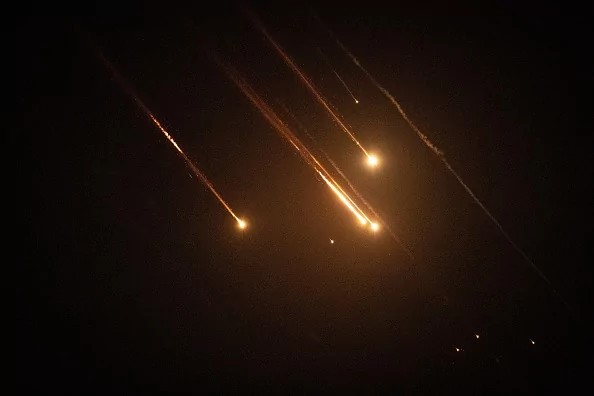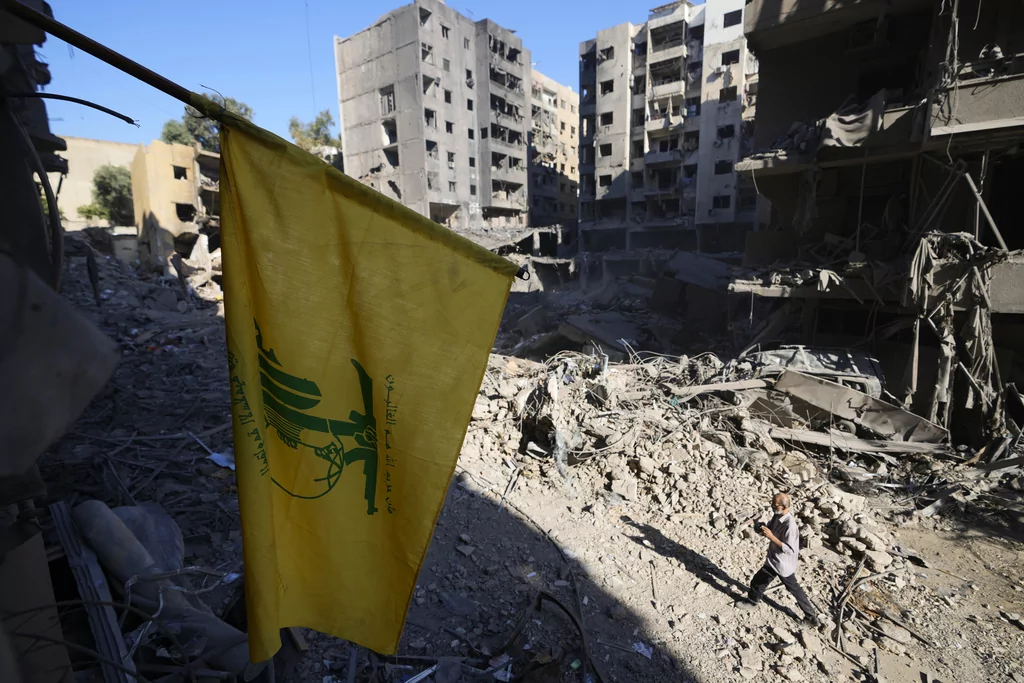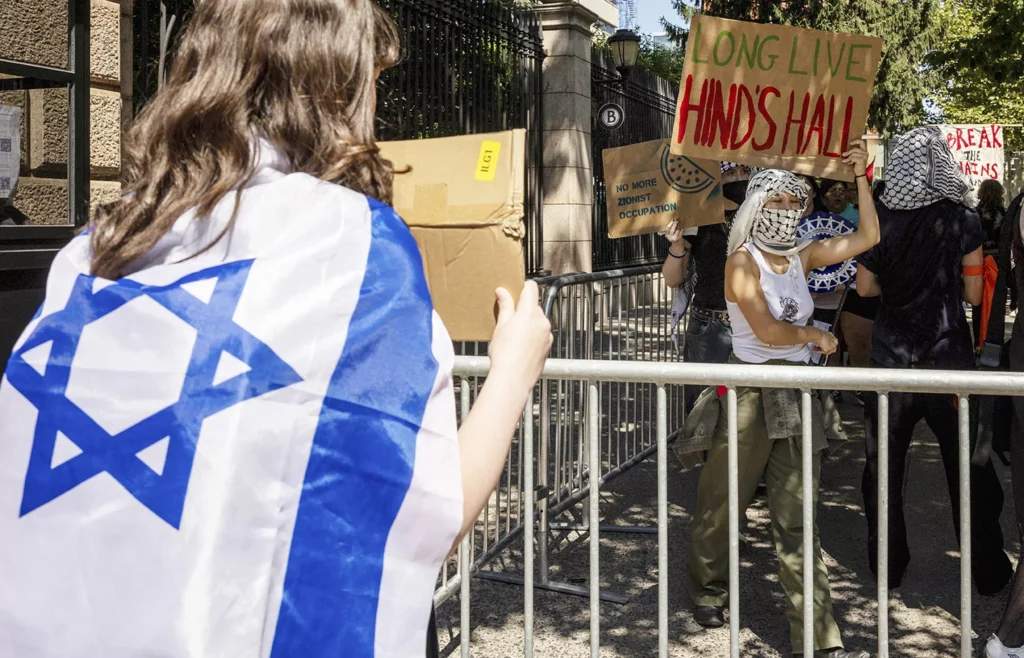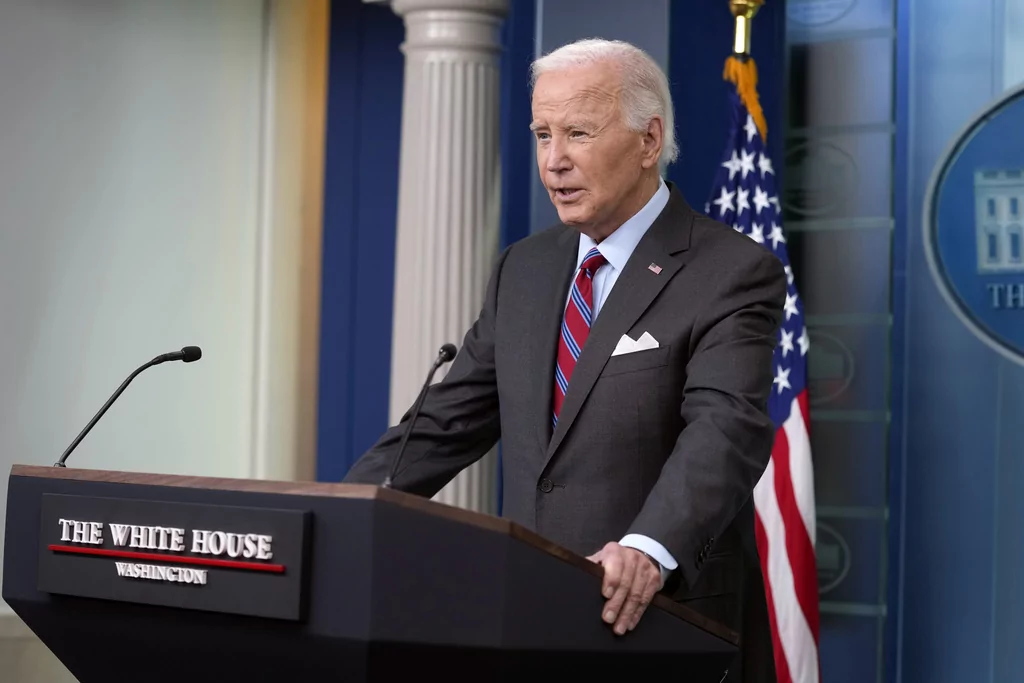
On October 7, 2023, Hamas terrorists killed 1,200 Israelis in a terrorist attack, the likes of which the country had never seen. Since then, Israel has been determined to eradicate Hamas from Gaza, while fending back attacks from Iran and its proxies. The aftermath of the attack has strained relations between the U.S. and Israel, while the Democratic Party at home threatens to be torn apart by anti-Israeli activists, both within Congress and playing out on campuses across the country. This Washington Examiner series will take a closer look at all of these issues with far-reaching consequences.
One year ago today, Hamas conducted the largest terrorist attack in Israel’s history, slaughtering 1,200 Israelis and taking hundreds more hostage.
That fateful day changed the Middle East forevermore, with the ramifications still playing out, culminating last week in Iran launching nearly 200 ballistic missiles in Israel’s direction. Meanwhile, the conflict with Hamas is raging, about 100 hostages are still being held in Gaza, and a second front has dramatically opened up against Hezbollah, with most of their leadership being wiped out in dramatic fashion over the past month.
Since the Oct. 7 attack, Israeli forces have carried out ground operations in Gaza and Lebanon, and has intercepted missiles and rockets fired from both countries in addition to projectiles fired from Iran, Syria, Iraq, and Yemen and Israel, in retaliation, has carried out strikes in all of those countries.
Back home in the U.S., it upended the relationship between America and one of its strongest allies. The Biden administration has struggled to walk a delicate tightrope of supporting Israel, while placating an anti-Israeli wing of the Democratic Party who believe genocide is being committed in Gaza. Such is the divide, particularly in key swing state Michigan, that it may cost the Democrats the White House come November. The administration’s delaying of arms to Israel has become a particular diplomatic sore spot between President Joe Biden and Israeli Prime Minister Benjamin Netanyahu.
Here’s where things stand one year on from the devastating terrorist attack.
Iran conflict spills into the open

“The bigger piece is Israel is at war with Iran,” former U.S. Central Command Commander Gen. Joseph Votel told the Washington Examiner. “It’s largely being orchestrated through these proxy groups.”
Israel’s military efforts were largely focused on Hamas for about the first 10 months of the war before they escalated their attacks on Hezbollah, which is Iran’s most powerful proxy in the region. After just weeks, Israel has decimated Hezbollah’s senior leaders, including assassinating Secretary-General Hassan Nasrallah in late September.
“The region is on fire — and the world, for that matter — and this administration has its head in the sand. We are spending billions of dollars blocking and tackling these threats, instead of actually deterring Iran and its proxies from launching attacks in the first place,” House Foreign Affairs Chairman Michael McCaul (R-TX) told the Washington Examiner.
Nasrallah’s killing, among others who died, including Iranian Revolution Guard Gen. Abbas Nilforushan, prompted Iran to attack Israel directly, which is a rarity for the regime. They launched about 180 ballistic missiles from Iranian soil to Israel on Oct. 1. Israel, with the help of the U.S., was able to intercept many of the missiles, and few casualties were reported.
“I think the big threat for Israel and for U.S. priorities in the region is the role that Iran has played in fomenting and then supporting this conflict,” Brian Carter of the Critical Threats Project at the American Enterprise Institute told the Washington Examiner. “When I say this conflict, I’m not just talking about Gaza or southern Lebanon, but in fact, the regional war that has been ongoing since October 7. So one of the things that this war has really drawn out is the degree of connectivity and coordination between Iran’s different proxy and partner groups across the Middle East.”
Netanyahu proclaimed that Tehran would “pay for” the attack. Israel’s retribution for the Oct. 1 aerial attack could bring further escalation to the region if Iranian leaders determine they need to respond. Iran’s nuclear and energy facilities have been named as possible targets of Israel’s attack, though going after something so coveted by Tehran could encourage them to hit back harder and potentially further destabilize the region.
Biden has said in recent days he opposes strikes on Iran’s nuclear facilities and oil fields, saying Israel has a right to respond but “proportionally.”
Fighting between Israel and Iran has gone on for decades, though it’s most often carried out in covert attacks of sabotage instead of on a battlefield, as Tehran largely leans on its proxies for more direct actions.
“It’s time to start treating terrorists for what they are, and actually stand behind our ally Israel with actions not just words,” McCaul said. “This administration must expedite all arms transfers to Israel, which have been subject to lengthy, politically motivated delays, including 2,000-pound bombs, to ensure Israel has the tools it needs to deter these threats and keep its citizens safe.”
Iran’s continued pursuit of nuclear weapons is an underlying factor in the current conflict.
U.S. Secretary of State Antony Blinken said in July that the amount of time needed to produce enough weapons-grade material for a nuclear weapon “is now probably one or two weeks.” He cited the Trump administration’s decision to pull out of the 2015 Iran nuclear agreement for Tehran’s continued development.
“Iran continues to dramatically expand its nuclear program in violation of its international obligations,” McCaul added. “More must also be done to restrict Iran’s access to funds and critical technology that’s fueling the regime’s weapons proliferation.”
Paging Hezbollah: Iran proxy leadership wiped out

Just days before Iran’s direct aerial assault, Israel increased its ground operations in southern Lebanon targeting Hezbollah. Over the last month or so, Israeli forces have significantly ramped up their operations against Hezbollah, including wiping out most of the U.S.-designated terrorist group’s senior leaders, through a series of air strikes, as well as more creative attacks, like booby-trapped pagers.
Hezbollah cross-border attacks, which began on Oct. 8, and the fear of another cross-border raid, this one by Hezbollah, prompted Israeli officials to evacuate more than 50,000 people from northern Israel, who remain displaced.
Biden signed onto a statement with a handful of other world leaders calling on Israel and Hezbollah to agree to a three-week-long ceasefire agreement so both sides could negotiate a diplomatic resolution without the potential for escalation. Days after the statement came out, Israel assassinated Nasrallah, a major escalation.
The Biden administration called Nasrallah’s killing “a measure of justice for his many victims,” but it still occurred after Netanyahu’s office distanced the prime minister from the ceasefire efforts.
Israeli officials have said the objective of their operations are to get Hezbollah’s attacks to stop and to allow for the displaced Israeli civilians to return to their homes. Israel and Hezbollah last went to war in 2006. The monthlong conflict, which began with a cross-border raid, ended with the passing of United Nations Security Council Resolution 1701. It has never fully been implemented.
Israel’s military was required to withdraw from southern Lebanon under UN Res. 1701, while Hezbollah was ordered to move its arsenal and positions north of the Litani River, which would effectively create a nearly 20-mile buffer zone between the border with Israel and Hezbollah’s positions. Hezbollah has never left the area south of the river.
Hamas reeling but not finished off

Israel has killed several Hamas senior leaders and destroyed many of their ranks over the course of their operations in Gaza, though it’s unclear if they’ve actually accomplished the goals they set out to achieve.
Israeli forces have killed Marwan Issa, the deputy commander in chief of the Izz al-Din al-Qassam Brigades, Muhammad Deif, the top military commander, and Ismail Haniyeh, the top political Hamas official based outside of Gaza. Haniyeh was assassinated in Tehran on July 31, in a bombing that Israel never publicly took credit for but is presumed to be responsible.
While the Israel Defense Forces (IDF) began their operations in northern Gaza and moved their way south, troops have periodically had to go back north to ensure Hamas cannot reconstitute.
“I won’t go so far as to say that they’ve eliminated the military threat that Hamas poses to the safety and security of Israel,” White House National Security Council spokesman John Kirby said in August. “There are still fighters alive and fighting. There are still tunnels that they use to move about and to store arms and ammunition, and they still have resources available to them. But there has been a tremendous amount of pressure put on Hamas. And from a military perspective, they have definitely achieved the vast majority of their objectives.”
The U.S., Qatari, and Egyptian governments have sought to broker a ceasefire agreement but have failed to get one over the finish line for several months. Hamas still holds about a hundred hostages, an unknown number of whom are still alive. Israeli forces have conducted a handful of rescue operations with varying success, while Hamas has not willingly released any hostage since the brief weeklong ceasefire deal in late November.
Hamas executed six of the hostages in early September, days before Israeli forces recovered their emaciated bodies. The terrorist group threatened to kill more hostages if Israel launched additional rescue operations.
Biden’s vulnerabilities exposed by conflict

Biden has identified as a strong ally of Israel over the course of his roughly five decades in politics, and yet the conflict effectively helped bring on the end of his political career.
His administration has continued to provide billions of dollars of military aid to Israel, even as U.S. officials implored their Israeli counterparts to do more to prevent civilian deaths in Gaza. They have also pushed very hard — along with Qatar and Egypt — to get Hamas and Israel to agree to a ceasefire deal for several months with little progress to show for it.
“If you agree to a Gaza ceasefire that ends this war but leaves Hamas in power, then are you just condemning yourself to doing this again in 10 years? So I think that’s the question,” Carter said. “That’s a big question for U.S. policymakers — not just end this war at any cost, but what does the United States want to see in the region over the next 10 years?”
A vocal portion of the Democratic Party has been critical of the administration’s unwillingness to stop providing Israel with offensive military equipment.
American Jews have historically favored Democratic candidates, but widespread protests of Israel in Democratic circles have put them in a difficult decision in November’s election.
The displeasure from his own party about his stance on the war hung over the 2024 Democratic primary, in which hundreds of thousands of Americans voted “uncommitted” instead of for Biden. The number of votes that the “Uncommitted Movement” received threatened to cost him the election. That is, until he dropped out of the race.
With Biden’s domestic support decreasing, he and his administration have more publicly pushed for Israel to agree to a ceasefire with Hamas, which they believe could be a way to get a sustained period of calm in the region.
The administration, concerned with how the Israelis could use it, blocked the transfer of 2,000 lb bombs from the U.S. to Israel. This type of bomb is believed to be the one the Israelis used to kill Nasrallah. They have also been accused by the GOP of slow-walking other transfers.
That has set up a tenuous situation between Biden and Netanyahu, who is also facing conflicting domestic pressures.
Biden said he did not know if Netanyahu was waiting to agree to a ceasefire deal to hurt the Democrats’ election changes in November when he was asked last week.
Vice President Kamala Harris was more vocal in calling out the plight of Palestinian civilians, even though she has not distinguished how a Harris administration would be different from Biden’s policies. The “Uncommitted Movement” declined to endorse Harris or Trump.
The Biden administration’s frequent refrain that it does not want a larger war could create the exact environment it was hoping to avoid because the Iran proxies’ attacks have not abated despite significant diplomatic efforts. Israel, seeing that diplomacy has not ceased the attacks, has opted against U.S. advisement, to increase their attacks to convince the proxies to stop.
With the presidential election about a month away, how a potential Trump administration would handle the conflict has gotten attention. Trump has said he thinks Israel needs to end its war quickly, while his running mate, Sen. J.D. Vance (R-OH), said during the vice presidential debate last week that he would defer to Israel on how they believe they should respond.
Other Iranian proxies
Iran also supports militias in Iraq and Syria and the Houthis in Yemen, all of whom have carried out tangential attacks.
The militias spent several months routinely firing rockets and missiles at U.S. bases in both countries, tallying about 170 attacks this past year.
In late January, the militias killed three U.S. troops — Sgt. William Jerome Rivers, Spc. Kennedy Ladon Sanders, and Spc. Breonna Alexsondria Moffett — at Tower 22, a small U.S. base in northeast Jordan. The U.S. military did not regularly respond to these attacks, but carried out significant airstrikes after the three U.S. service members were killed, who remain the only U.S. troops in the Middle East to be killed in the conflict.
The Houthis, for their part, have infrequently targeted Israel with missile attacks, while their primary anti-western attacks is their targeting of commercial vessels transiting the Red Sea and Gulf of Aden.
Of the Houthis dozens’ of attacks, they have sunk two vessels — both of which posed environmental threats — and have killed a handful of civilian shipmen. In one of their first attacks, the Houthis targeted the Galaxy Leader ship and kidnapped the 25-person crew.
The Red Cross conducted its second visit with the 25 crew members on Sept. 25, 2024, a spokesperson told the Washington Examiner.
Their attacks have severely limited the usage of the Red Sea by commercial vessels, which has forced shipping companies to send their vessels on longer and more expensive routes to avoid possible attacks.
CLICK HERE TO READ MORE FROM THE WASHINGTON EXAMINER
Commercial shipping in the Red Sea and Gulf of Aden has decreased by around 60% compared to before the Middle East crises commenced, Noam Raydan, a Senior Fellow at The Washington Institute for Near East Policy, told the Washington Examiner.
The U.S. has carried out several rounds of airstrikes against the Houthis that have not stopped the attacks. Most recently, U.S. forces hit 15 Houthi targets last week.






